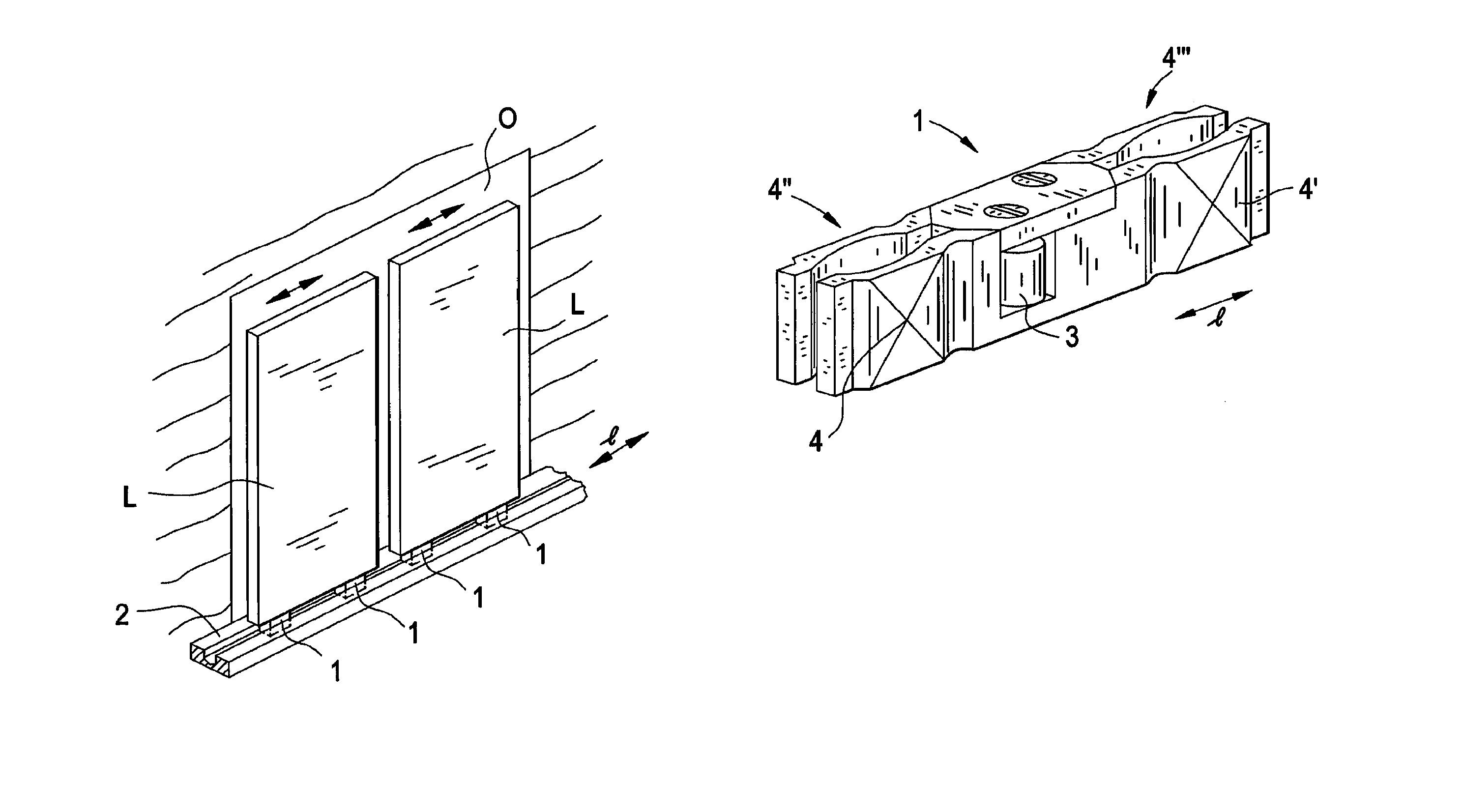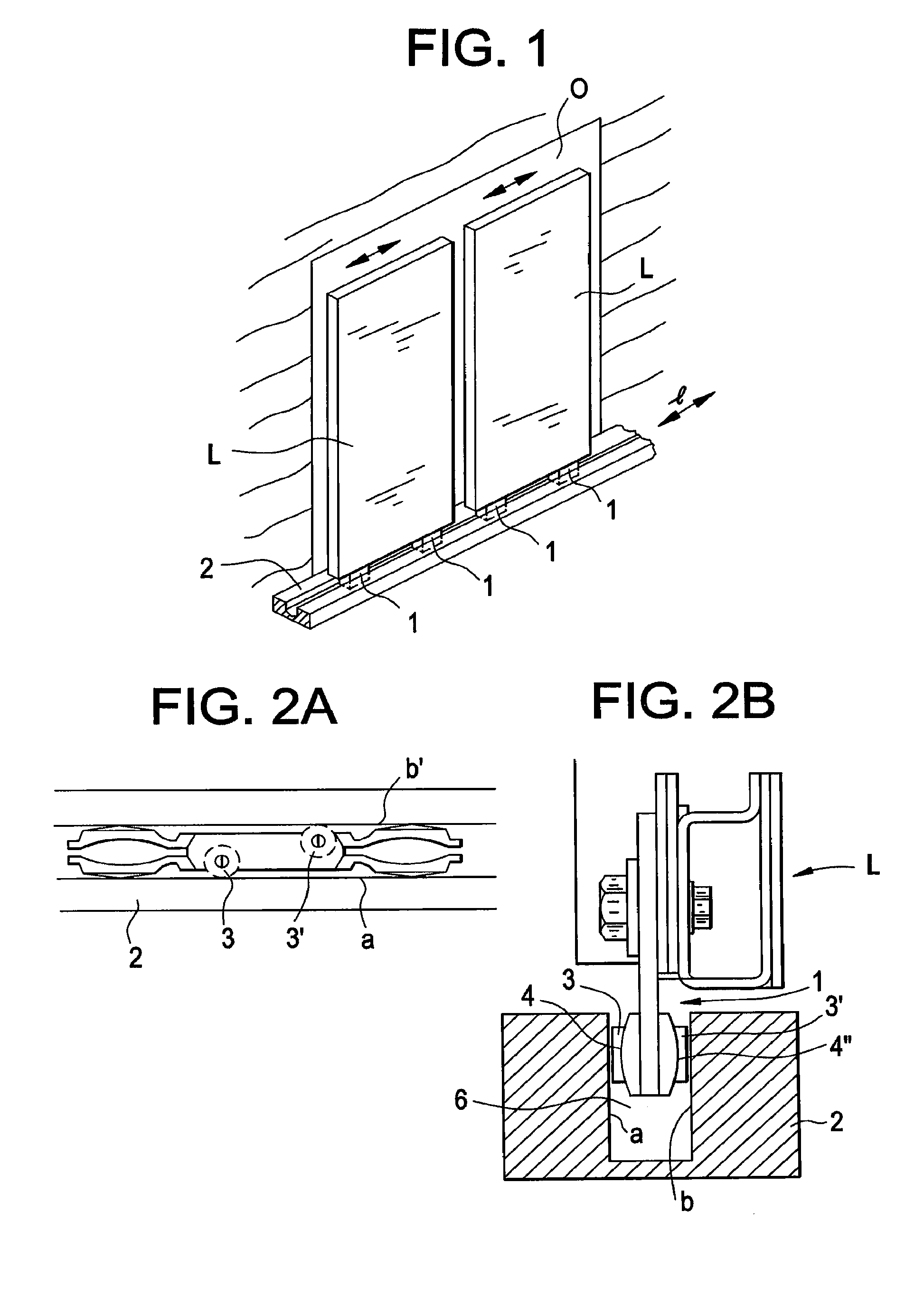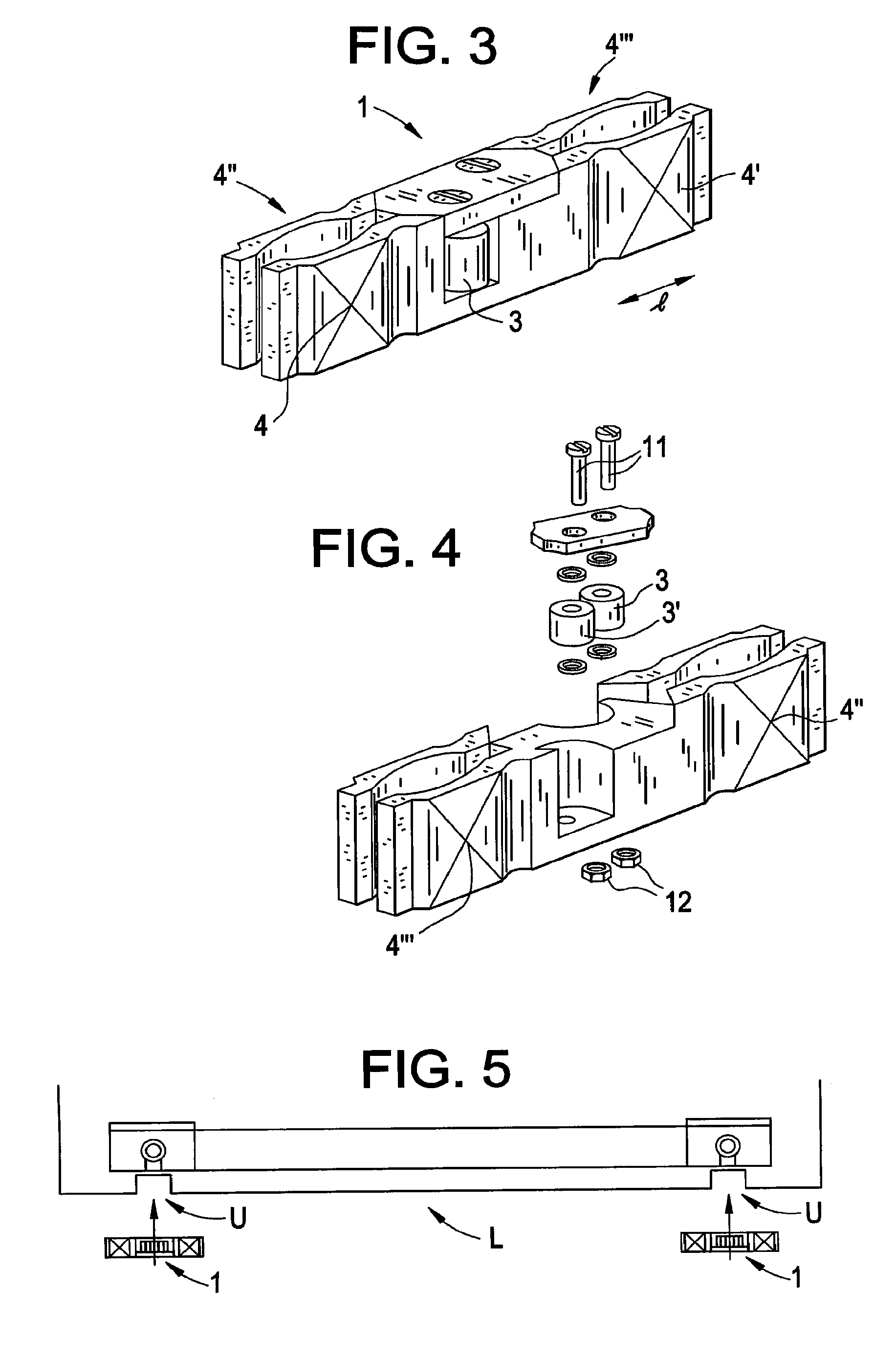Door arrangement and guide of a door
a technology of door and guide, which is applied in the direction of wing accessories, transportation and packaging, and wing arrangements, etc., can solve the problems of increasing the wear of the surface and bearing of the roll, increasing the need for repair, and reducing the jamming of the automatically movable door. , the effect of reducing the need for repair
- Summary
- Abstract
- Description
- Claims
- Application Information
AI Technical Summary
Benefits of technology
Problems solved by technology
Method used
Image
Examples
Embodiment Construction
[0056]FIG. 1 presents an indicative three-dimensional view of a door arrangement according to the invention. In the arrangement the door panel L is arranged to move on a path of movement controlled by the guide arrangement in front of the access opening O between a position that covers the access opening and a position that covers the access opening less. The access opening O can be the door opening of an elevator car, the opening of a landing door of an elevator, or some other access opening of the building, e.g. an entrance to a building or to a part of a building. The door panel preferably receives its operating power from an actuator (not shown), such as e.g. an electric motor or a linear motor.
[0057]The guide arrangement for controlling the path of movement of a door panel L comprises two guides 1 rigidly supported on the door panel that are at a distance from each other and disposed on the bottom edge of the door panel, and a guide rail 2, closely along which the aforementione...
PUM
 Login to View More
Login to View More Abstract
Description
Claims
Application Information
 Login to View More
Login to View More - R&D
- Intellectual Property
- Life Sciences
- Materials
- Tech Scout
- Unparalleled Data Quality
- Higher Quality Content
- 60% Fewer Hallucinations
Browse by: Latest US Patents, China's latest patents, Technical Efficacy Thesaurus, Application Domain, Technology Topic, Popular Technical Reports.
© 2025 PatSnap. All rights reserved.Legal|Privacy policy|Modern Slavery Act Transparency Statement|Sitemap|About US| Contact US: help@patsnap.com



